Abstract
1. In cats anaesthetized with a mixture of chloralose and urethane, stimulation of cardiac receptors by left atrial injections of veratridine had little or no effect on pulmonary ventilation but caused bradycardia, systemic hypotension and hindlimb vasodilation with a latency of 3.3 s. 2. The hindlimb vasodilatation was due largely, if not entirely, to a reduction in sympathetic vasoconstrictor activity. 3. Similar cardiovascular responses occurred when the arterial blood pressure was maintained constant and also in artificially ventilated animals. 4. When the cardiac receptors were excited during a period of apnoea which was induced reflexly by electrical stimulation of the central cut end of a superior laryngeal nerve, the cardio-inhibitory response to left atrial injections of veratridine was enhanced but the size of the vasodilator response was unaffected. 5. In contrast, the cardiovascular effects of stimulation of the carotid body chemoreceptors, bradycardia and hindlimb vasoconstriction were enhanced by the laryngeal input. 6. The possible central mechanism responsible for the differential modulation of cardiac receptor and carotid chemoreceptor reflexes by respiration are discussed.
Full text
PDF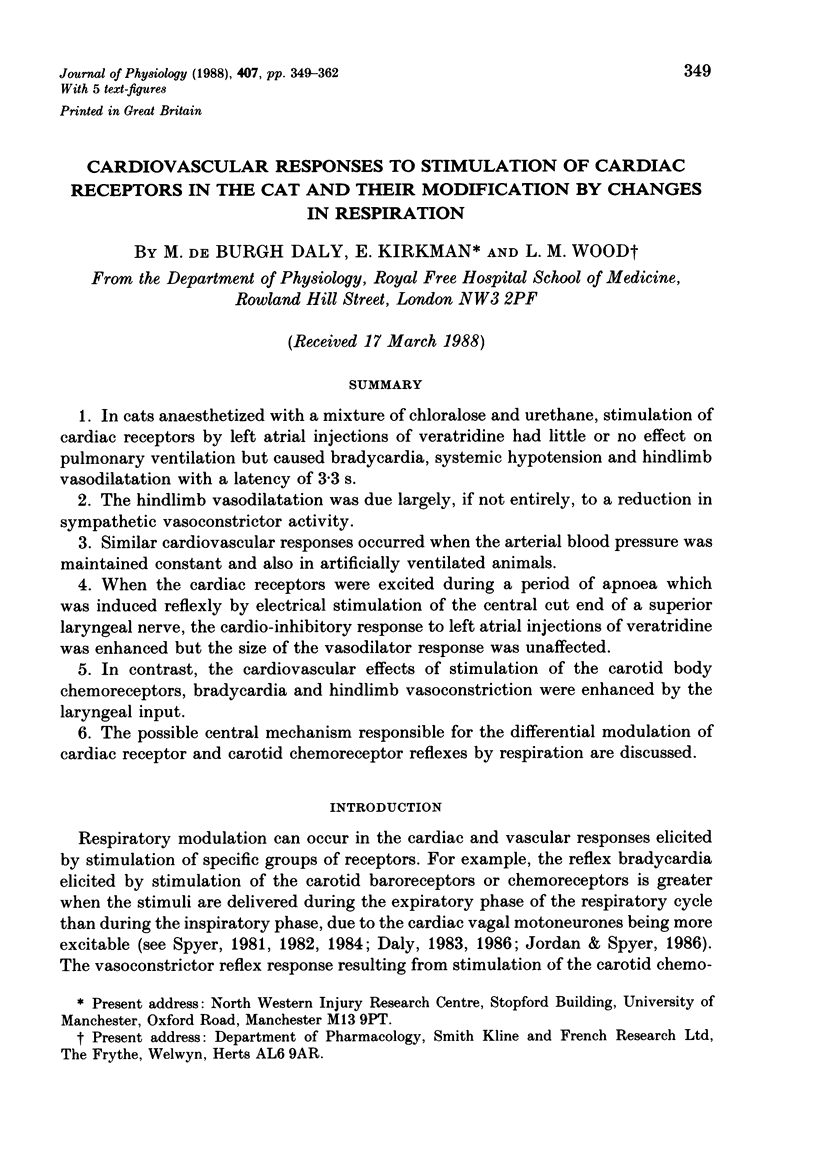
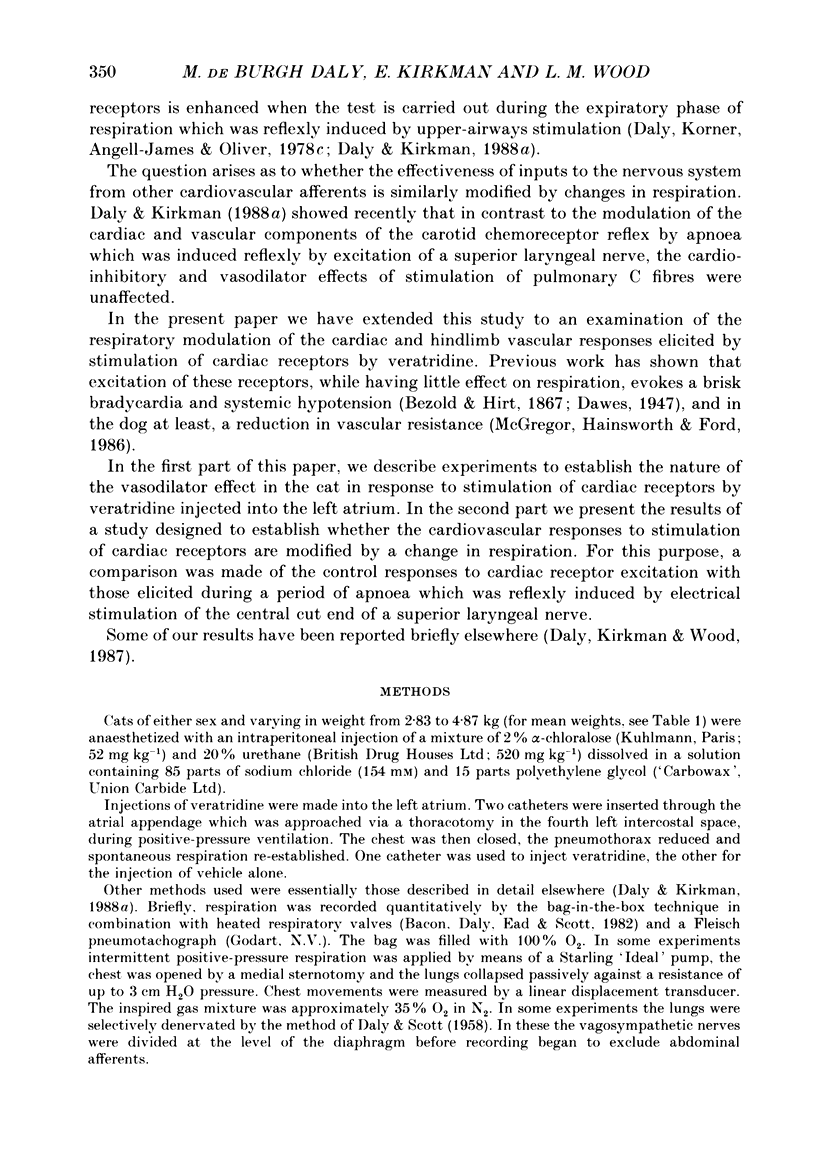
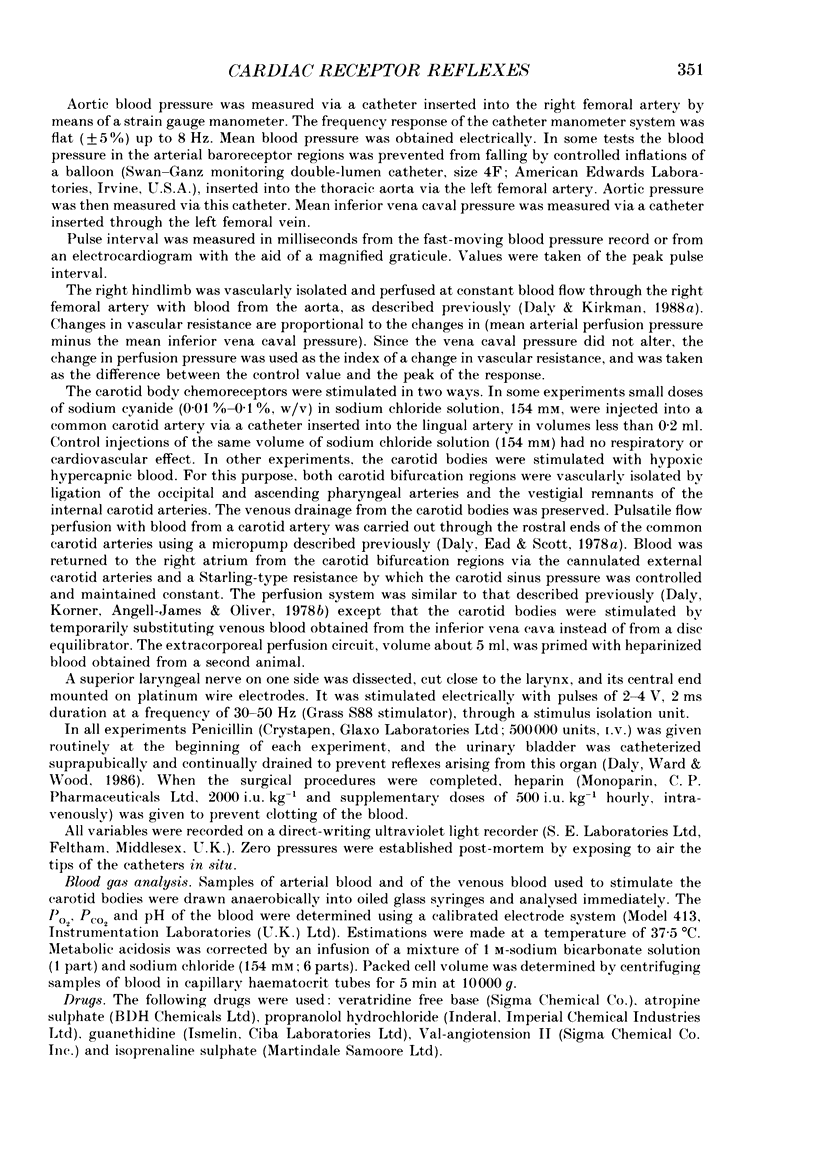
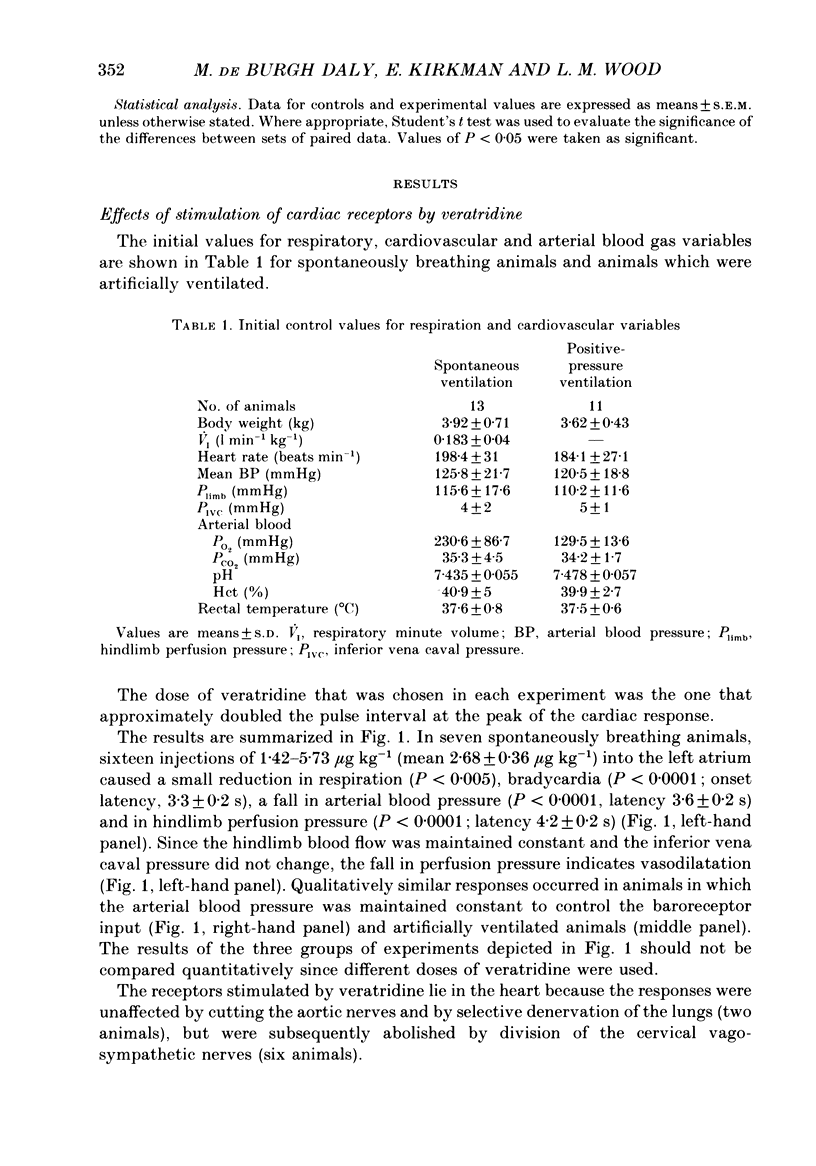
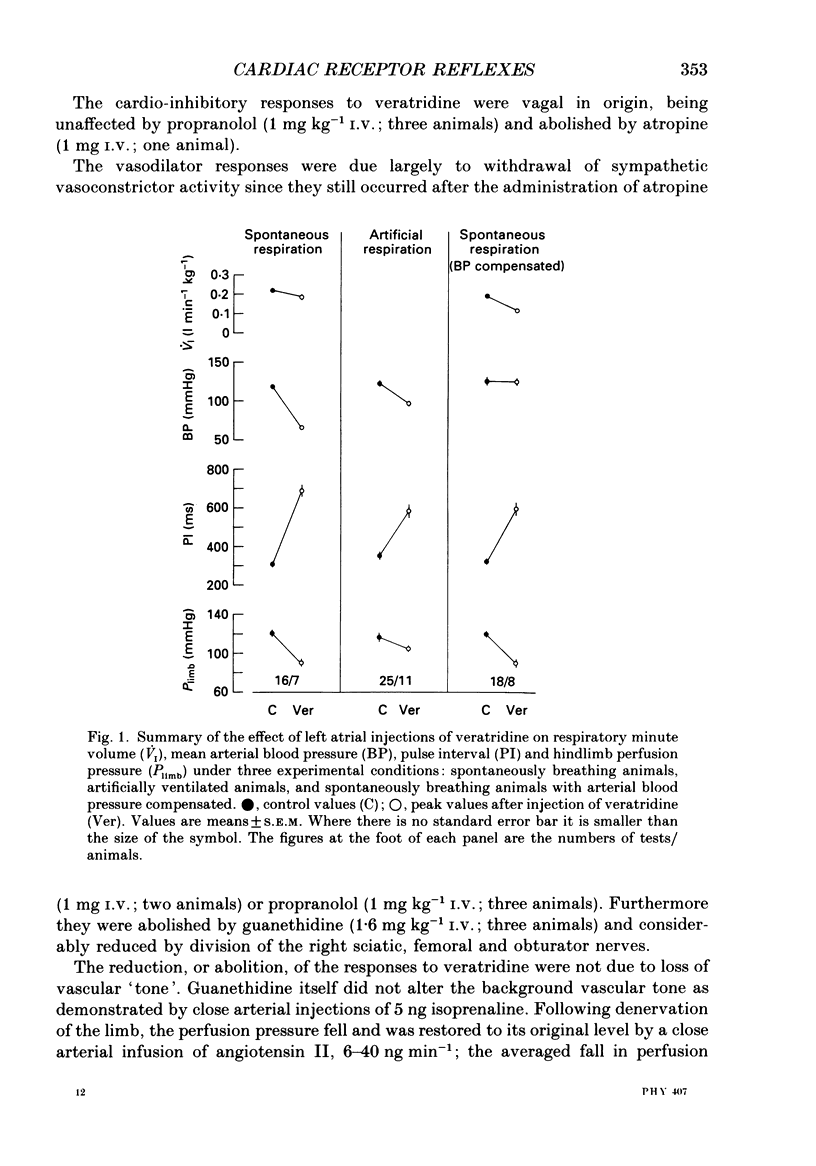
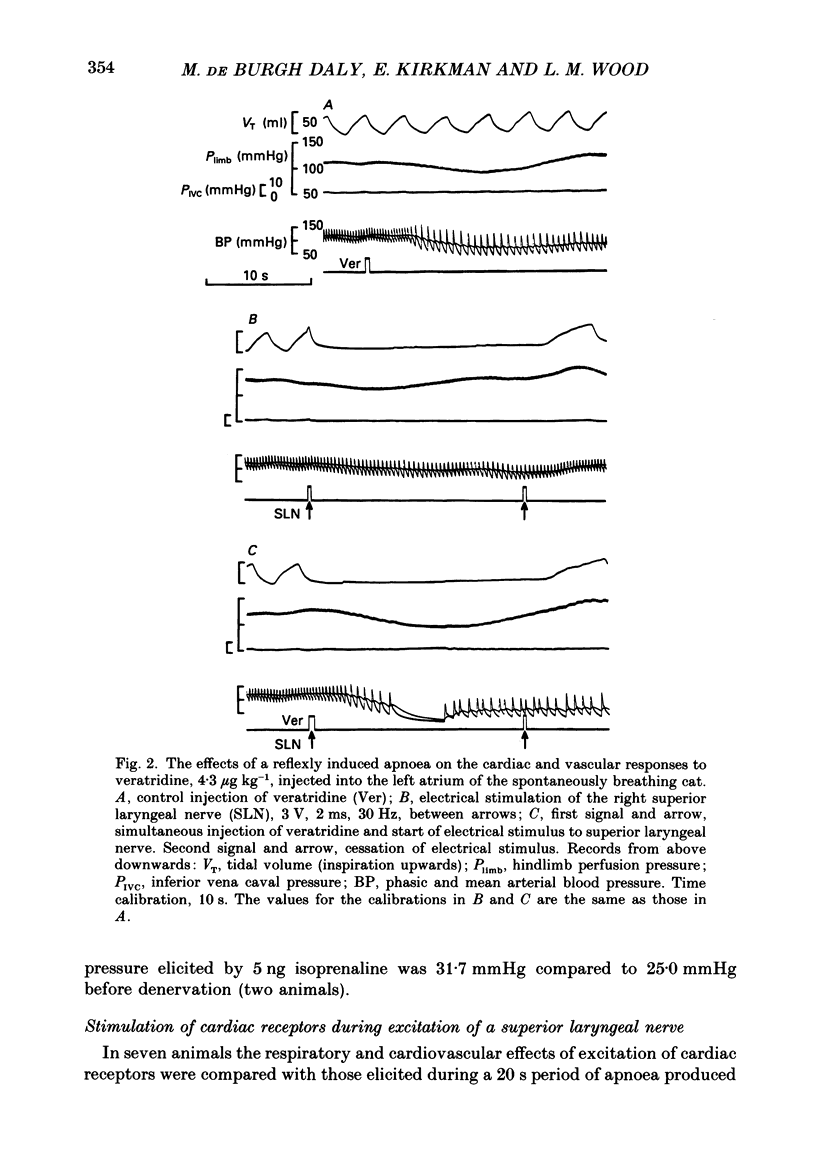

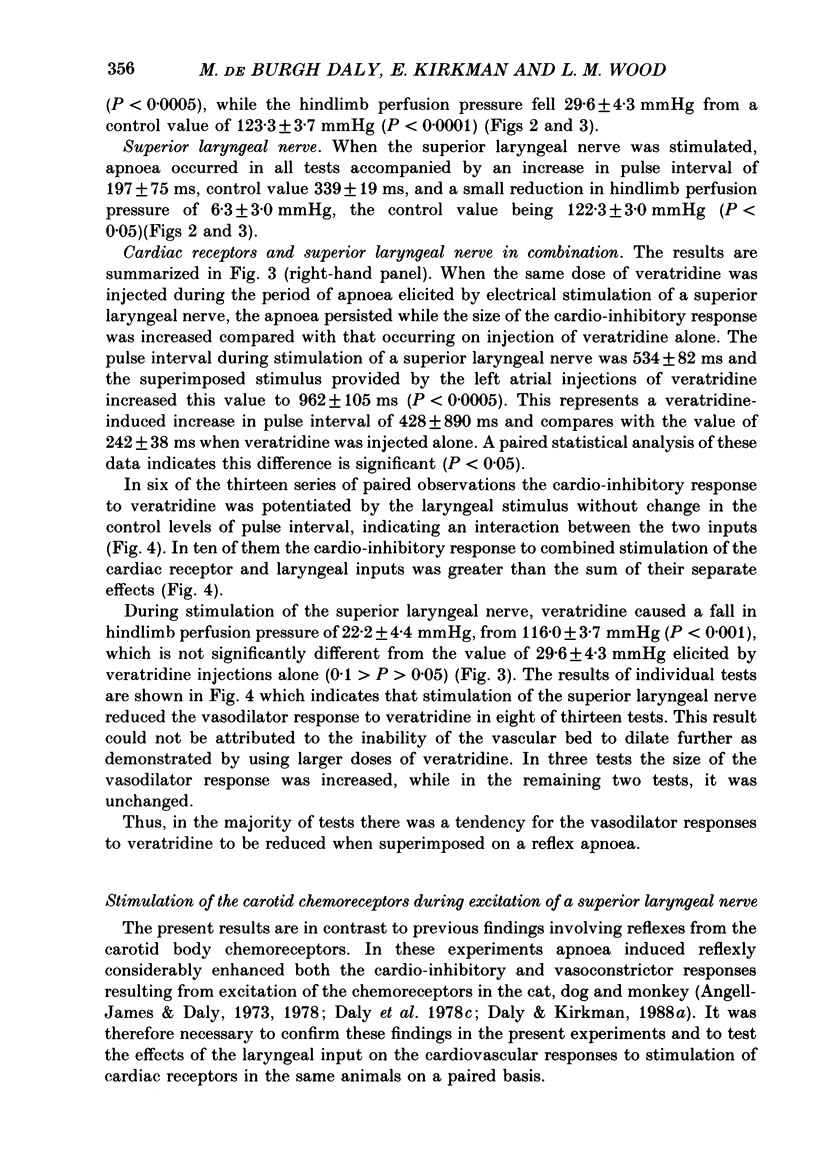
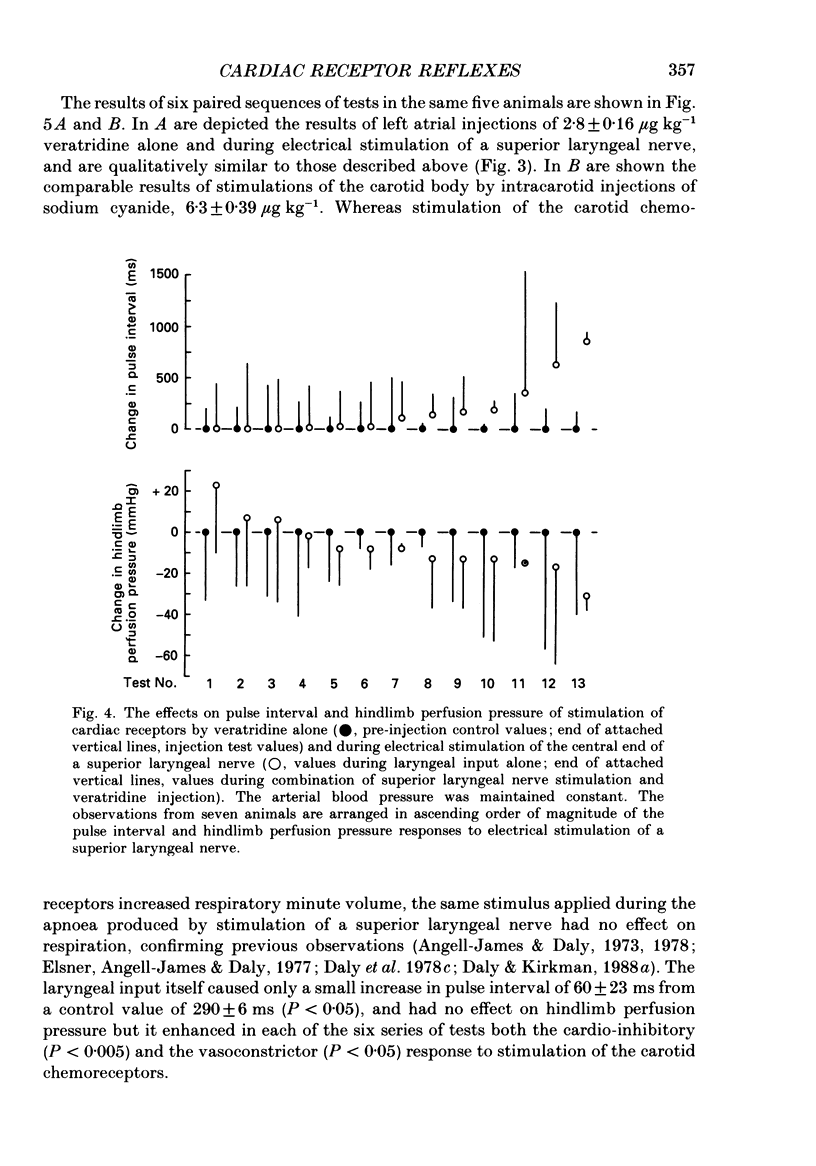
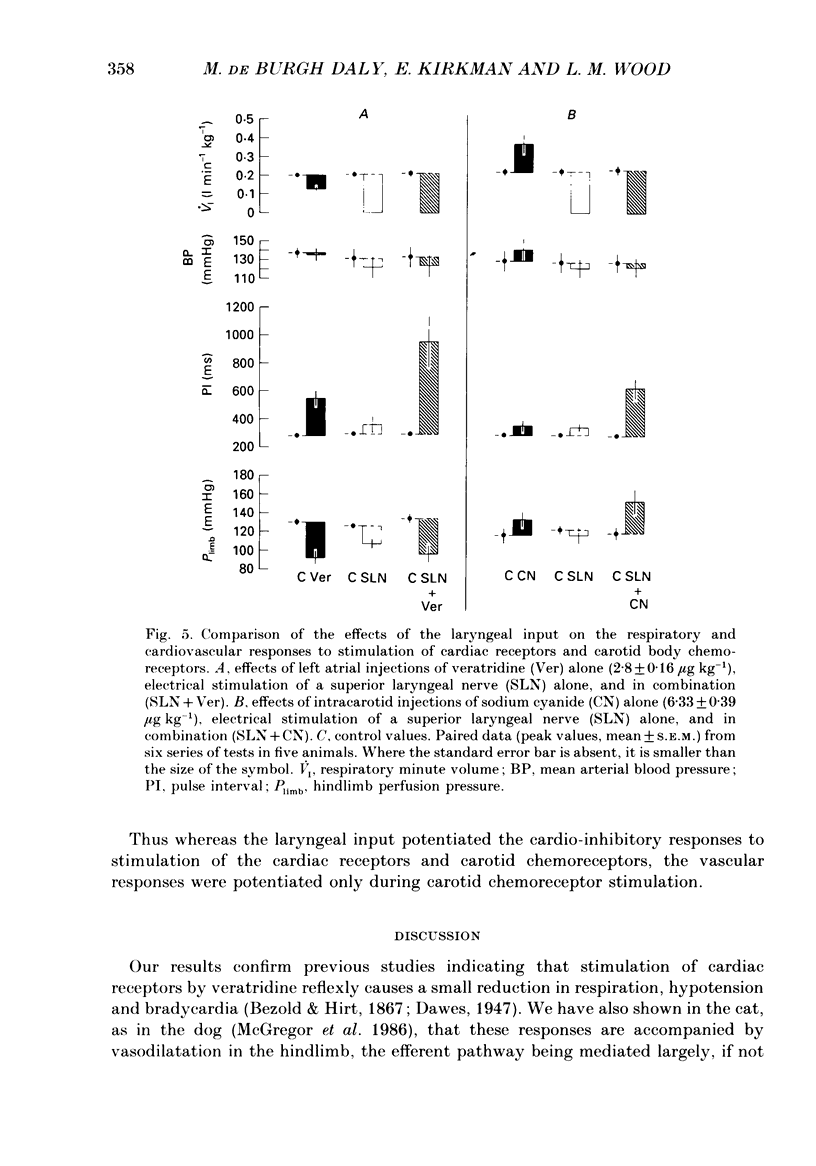
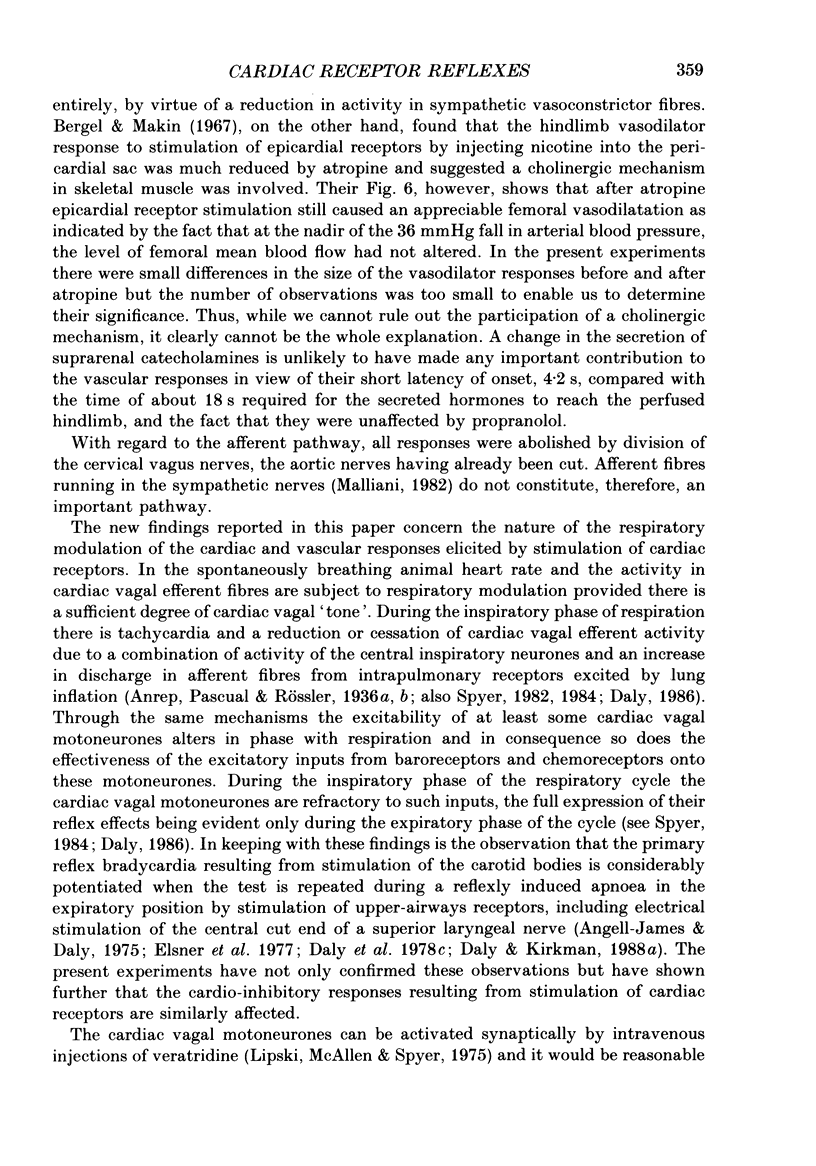
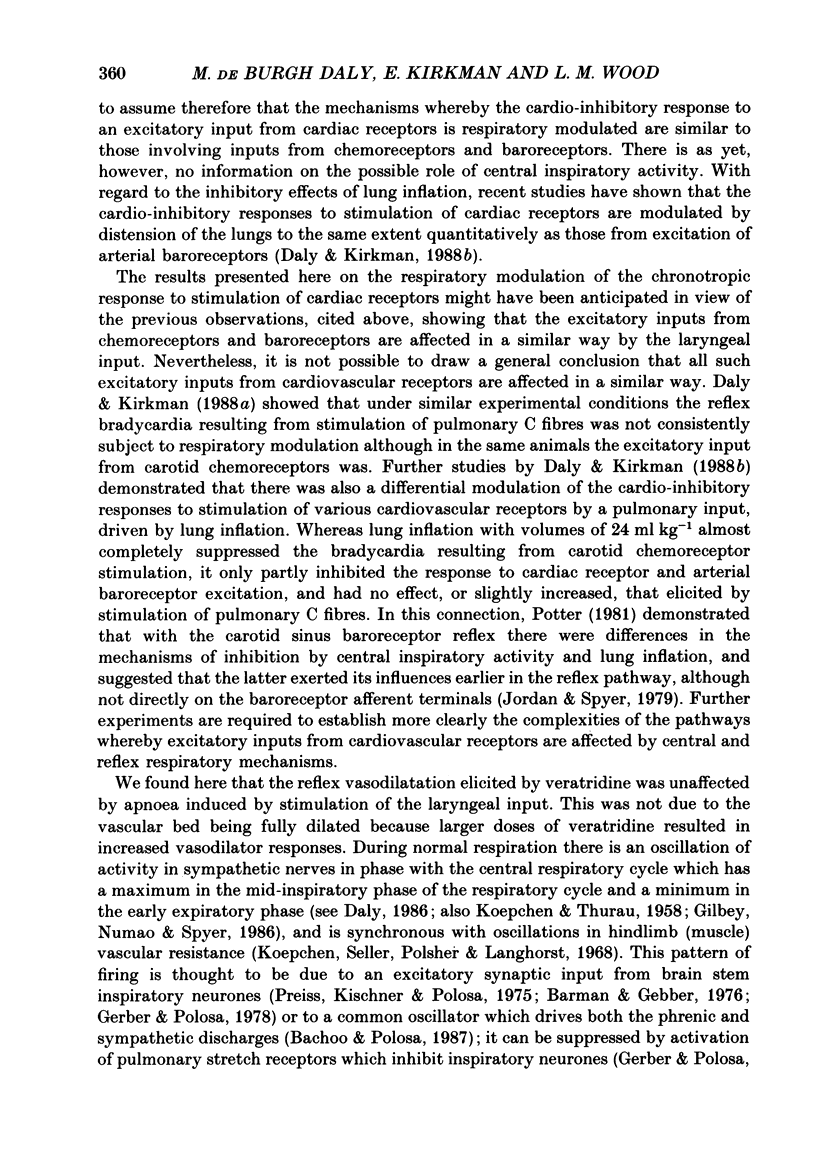
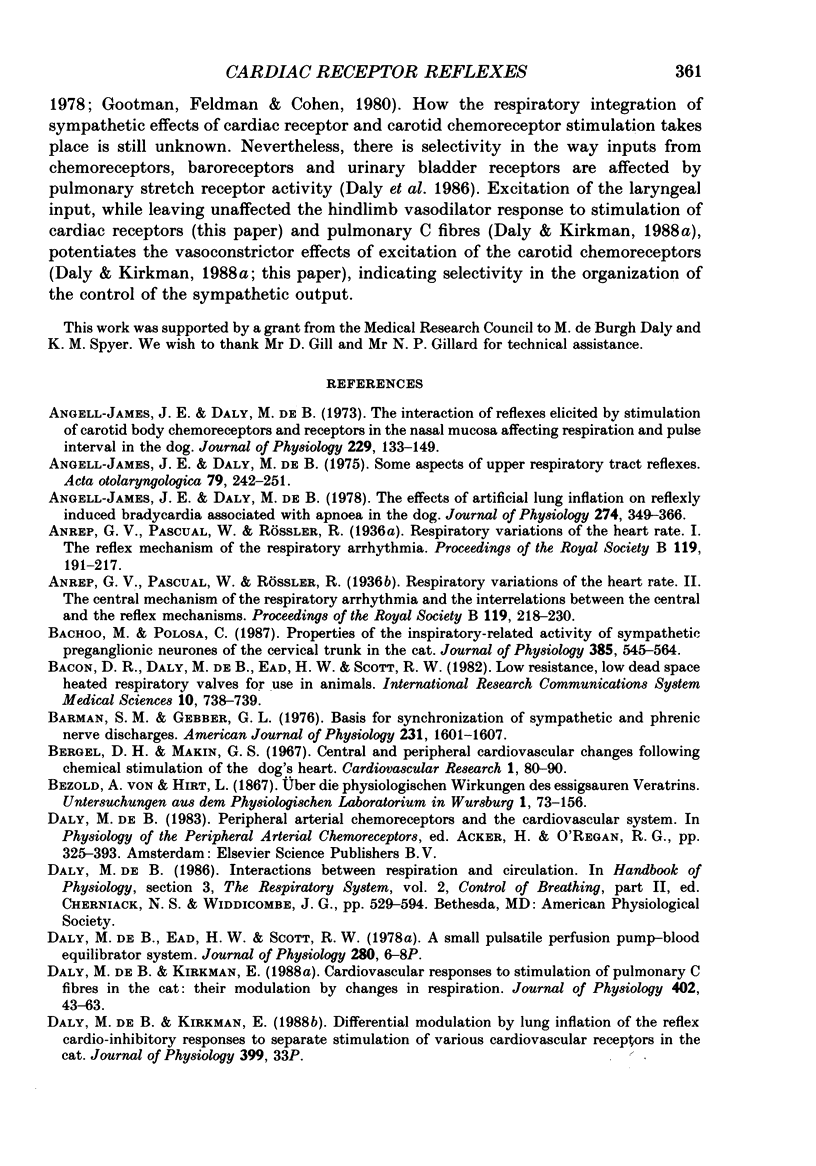
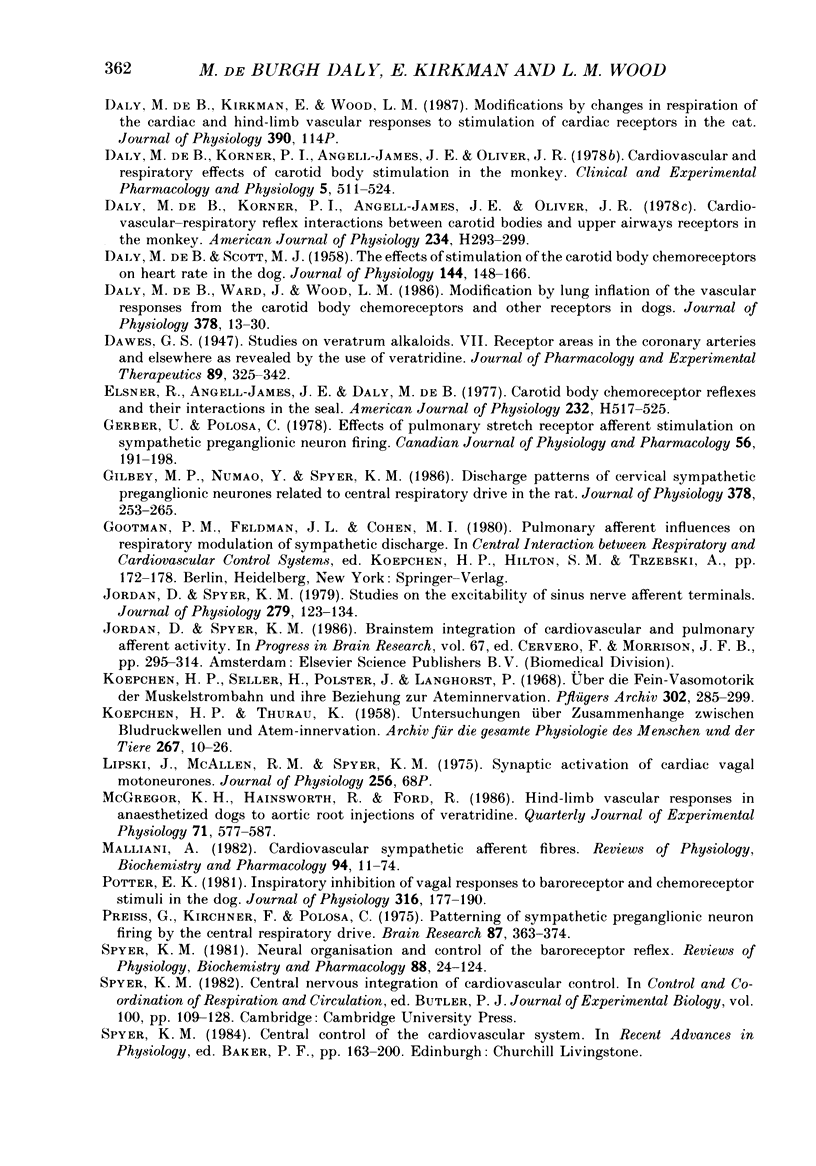
Selected References
These references are in PubMed. This may not be the complete list of references from this article.
- Angell-James J. E., Daly M. B. Some aspects of upper respiratory tract reflexes. Acta Otolaryngol. 1975 Mar-Apr;79(3-4):242–252. doi: 10.3109/00016487509124680. [DOI] [PubMed] [Google Scholar]
- Angell-James J. E., Daly M. D. The effects of artificial lung inflation on reflexly induced bradycardia associated with apnoea in the dog. J Physiol. 1978 Jan;274:349–366. doi: 10.1113/jphysiol.1978.sp012152. [DOI] [PMC free article] [PubMed] [Google Scholar]
- Angell-James J. E., Daly M. de B. The interaction of reflexes elicited by stimulation of carotid body chemoreceptors and receptors in the nasal mucosa affecting respiration and pulse interval in the dog. J Physiol. 1973 Feb;229(1):133–149. doi: 10.1113/jphysiol.1973.sp010131. [DOI] [PMC free article] [PubMed] [Google Scholar]
- Bachoo M., Polosa C. Properties of the inspiration-related activity of sympathetic preganglionic neurones of the cervical trunk in the cat. J Physiol. 1987 Apr;385:545–564. doi: 10.1113/jphysiol.1987.sp016507. [DOI] [PMC free article] [PubMed] [Google Scholar]
- Barman S. M., Gebber G. L. Basis for synchronization of sympathetic and phrenic nerve discharges. Am J Physiol. 1976 Nov;231(5 Pt 1):1601–1607. doi: 10.1152/ajplegacy.1976.231.5.1601. [DOI] [PubMed] [Google Scholar]
- Bergel D. H., Makin G. S. Central and peripheral cardiovascular changes following chemical stimulation of the surface of the dog's heart. Cardiovasc Res. 1967 Jan;1(1):80–90. doi: 10.1093/cvr/1.1.80. [DOI] [PubMed] [Google Scholar]
- Coleman H. A., Parkington H. C. Induction of prolonged excitability in myometrium of pregnant guinea-pigs by prostaglandin F2 alpha. J Physiol. 1988 May;399:33–47. doi: 10.1113/jphysiol.1988.sp017066. [DOI] [PMC free article] [PubMed] [Google Scholar]
- DE DALY M. B., SCOTT M. J. The effects of stimulation of the carotid body chemoreceptors on heart rate in the dog. J Physiol. 1958 Nov 10;144(1):148–166. doi: 10.1113/jphysiol.1958.sp006092. [DOI] [PMC free article] [PubMed] [Google Scholar]
- Daly M. B., Korner P. I., Angell-James J. E., Oliver J. R. Cardiovascular-respiratory reflex interactions between carotid bodies and upper-airways receptors in the monkey. Am J Physiol. 1978 Mar;234(3):H293–H299. doi: 10.1152/ajpheart.1978.234.3.H293. [DOI] [PubMed] [Google Scholar]
- Daly M. D., Kirkman E. Cardiovascular responses to stimulation of pulmonary C fibres in the cat: their modulation by changes in respiration. J Physiol. 1988 Aug;402:43–63. doi: 10.1113/jphysiol.1988.sp017193. [DOI] [PMC free article] [PubMed] [Google Scholar]
- Daly M. D., Ward J., Wood L. M. Modification by lung inflation of the vascular responses from the carotid body chemoreceptors and other receptors in dogs. J Physiol. 1986 Sep;378:13–30. doi: 10.1113/jphysiol.1986.sp016205. [DOI] [PMC free article] [PubMed] [Google Scholar]
- Elsner R., Angell-James J. E., de Burgh Daly M. Carotid body chemoreceptor reflexes and their interactions in the seal. Am J Physiol. 1977 May;232(5):H517–H525. doi: 10.1152/ajpheart.1977.232.5.H517. [DOI] [PubMed] [Google Scholar]
- Gerber U., Polosa C. Effects of pulmonary stretch receptor afferent stimulation on sympathetic preganglionic neuron firing. Can J Physiol Pharmacol. 1978 Apr;56(2):191–198. doi: 10.1139/y78-027. [DOI] [PubMed] [Google Scholar]
- Gilbey M. P., Numao Y., Spyer K. M. Discharge patterns of cervical sympathetic preganglionic neurones related to central respiratory drive in the rat. J Physiol. 1986 Sep;378:253–265. doi: 10.1113/jphysiol.1986.sp016218. [DOI] [PMC free article] [PubMed] [Google Scholar]
- Jordan D., Spyer K. M. Brainstem integration of cardiovascular and pulmonary afferent activity. Prog Brain Res. 1986;67:295–314. doi: 10.1016/s0079-6123(08)62769-7. [DOI] [PubMed] [Google Scholar]
- Jordan D., Spyer K. M. Studies on the excitability of sinus nerve afferent terminals. J Physiol. 1979 Dec;297(0):123–134. doi: 10.1113/jphysiol.1979.sp013031. [DOI] [PMC free article] [PubMed] [Google Scholar]
- KOEPCHEN H. P., THURAU K. Untersuchungen über Zusammenhänge zwischen Blutdruckwellen und Ateminnervation. Pflugers Arch. 1958;267(1):10–26. doi: 10.1007/BF00362243. [DOI] [PubMed] [Google Scholar]
- Koepchen H. P., Seller H., Polster J., Langhorst P. Uber die Fein-Vasomotorik der Muskelstrombahn und ihre Beziehung zur Ateminnervation. Pflugers Arch. 1968;302(4):285–299. doi: 10.1007/BF00592729. [DOI] [PubMed] [Google Scholar]
- McGregor K. H., Hainsworth R., Ford R. Hind-limb vascular responses in anaesthetized dogs to aortic root injections of veratridine. Q J Exp Physiol. 1986 Oct;71(4):577–587. doi: 10.1113/expphysiol.1986.sp003018. [DOI] [PubMed] [Google Scholar]
- Potter E. K. Inspiratory inhibition of vagal responses to baroreceptor and chemoreceptor stimuli in the dog. J Physiol. 1981 Jul;316:177–190. doi: 10.1113/jphysiol.1981.sp013781. [DOI] [PMC free article] [PubMed] [Google Scholar]
- Preiss G., Kirchner F., Polosa C. Patterning of sympathetic preganglionic neuron firing by the central respiratory drive. Brain Res. 1975 Apr 11;87(2-3):363–374. doi: 10.1016/0006-8993(75)90434-5. [DOI] [PubMed] [Google Scholar]
- Spyer K. M. Neural organisation and control of the baroreceptor reflex. Rev Physiol Biochem Pharmacol. 1981;88:24–124. [PubMed] [Google Scholar]
- de Burgh Daly M., Ead H. W., Scott R. W. A small pulsatile perfusion pump-blood equilibrator system [proceedings]. J Physiol. 1978 Jul;280:6P–8P. [PubMed] [Google Scholar]
- de Burgh Daly M., Korner P. I., Angell-James J. E., Oliver J. A. Cardiovascular and respiratory effects of carotid body stimulation in the monkey. Clin Exp Pharmacol Physiol. 1978 Sep-Oct;5(5):511–524. doi: 10.1111/j.1440-1681.1978.tb00704.x. [DOI] [PubMed] [Google Scholar]


